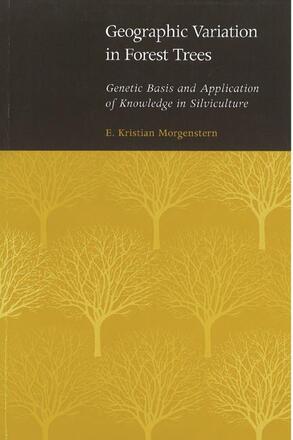
Geographic Variation in Forest Trees
Genetic Basis and Application of Knowledge in Silviculture
Description
Geographic Variation in Forest Trees is the first book to
examine this subject from a world-wide perspective. The author
discusses population genetic theory and genetic systems of native North
American tree species as they interact with environments in the major
climatic regions in the world. He then demonstrates how this knowledge
is used to guide seed zoning and seed transfer in silviculture, basing
much of his discussion on models developed in Scandinavia and North
America. In the final chapter, the author addresses the issue of
genetic conservation -- a subject of great concern in the face of
accelerated forest destruction, industrial pollution, and climatic
change. This comprehensive, well-researched book makes a significant
contribution to the knowledge of one of our most important renewable
natural resources.
Reviews
Dr. Morgenstern has taken a complex field of study with a long history and delivered its essence to his readers ... The reader is left with an overall understanding of geographic variations with forest trees and the ability to delve into literature of more specific interest ... Dr. Morgenstern has compiled and distilled a considerable amount of literature and experience into a succinct and informative text.
- Steve Clements
All in all, the book succeeds in its objective. While relatively short, it touches on the full array of concepts, methods, results, and significance of geographic genetic variation in forest trees ... Each of the major points is reinforced with appropriate examples from the scientific literature and beautifully rendered figures are provided to assist in visualization. Most valuably, the book provides an entry to the vast literature on the subject ... a service to students, tree breeders, and evolutionary biologists alike ... my overwhelming impression was that Dr. Morgenstern had put his heart and soul, as well as his prodigious knowledge, into the effort. I for one thank him for sharing the insights of a well-spent career.
- Forest Science 44 (3), 1998